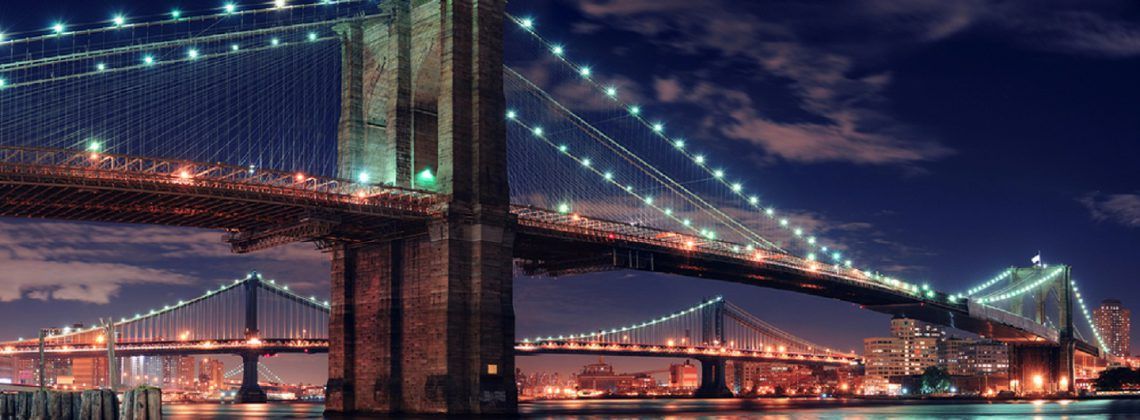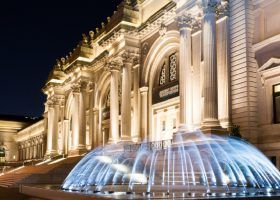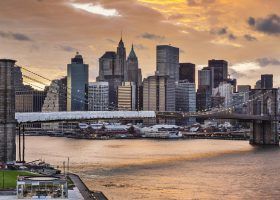New York City boasts a bevy of architectural and engineering marvels. You likely can name a few like the Empire State Building or Statue of Liberty. But there’s so much more to explore! Read more about NYC’s architectural and engineering achievements below!
Pro Tip: Planning your trip to NYC? Bookmark this post in your browser so you can easily find it when you’re in the city. See our guide to New York City for more planning resources, our best NYC tours for a memorable trip, and the top things to do in NYC.
17 of New York City’s Architectural and Engineering Marvels
New York City is famous for many things—shopping, entertainment, Wall Street, pizza, Statue of Liberty, yellow taxis, passionate sports fans and so much more. However, NYC is also full of architectural and engineering marvels spanning several centuries.
In this short article, we’ll explore many angles of NYC’s architectural and engineering gems. From recent innovations like One World Trade Center to the legacies of that Founding-Father-turned-Broadway superstar Alexander Hamilton, there are so many sites to explore!
This is not meant to be an exhaustive list of NYC’s architectural and engineering wonders. Such a discussion requires hefty books. However, these 17 places make for a great conversation starter and introduction to New York City!
Not ready to book a tour? Plan your trip using our helpful NYC Guide.
17. General Ulysses S. Grant National Memorial
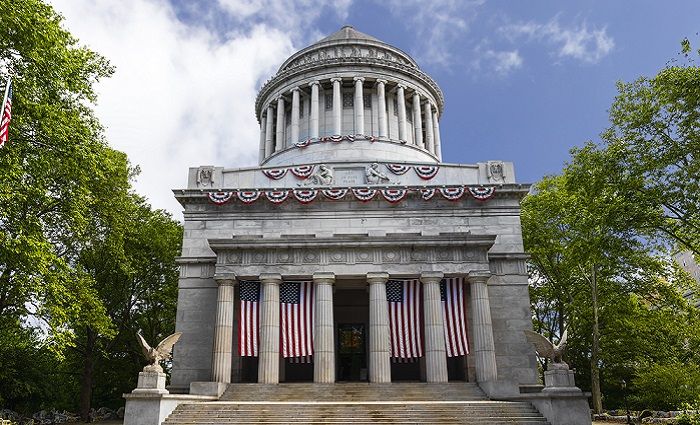
President | Civil War Hero | Artistic Benches
Historian Geoffrey Perret tells us the memorial, commonly referred to as Grant’s Tomb, is the largest mausoleum in the country. However, it is probably most famous for an old joke: “Who’s buried in Grant’s Tomb?” “Who?” “Grant, stupid!”
Jokes aside, it is the final resting place of Civil War hero and 18th US President Ulysses S. Grant and his wife. Furthermore, historian Eric Homberger says the massive granite structure was completed about a dozen years after Grant’s death in 1885.
You probably wouldn’t expect Gaudi-inspired art in the vicinity of the tomb of a 19th-century American president and general. But that is exactly what you get if you visit Grant’s Tomb. In fact, architect Philip Danzig says Chilean artist Pedro Silva designed a series of benches in the 1970s to surround the memorial.
Moreover, Danzig says Silva’s benches became a community folk art project to commemorate Grant’s role in preserving the Union. More than 2,000 people helped!
How to get to: Grant’s Tomb
16. Green-Wood Cemetery
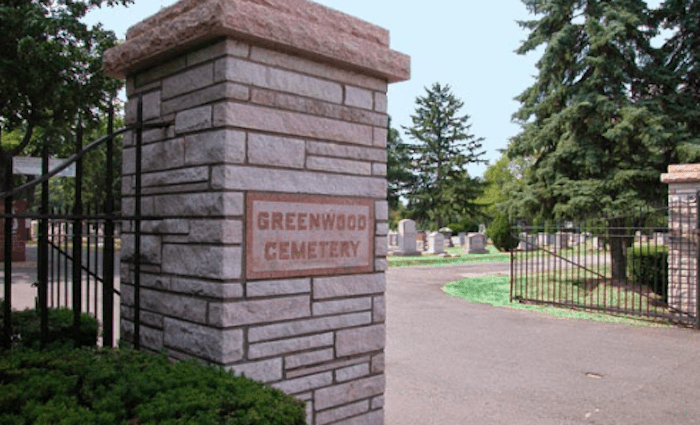
Peaceful | Battlefield | American Story
Today, Brooklyn’s Green-Wood Cemetery is a peaceful spot with impressive city views. Historian Jeffrey I. Richman leads projects to publish biographies of American military veterans interred at Green-Wood Cemetery. Moreover, the final resting places of many Brooklyn legends from athletes to musicians can also be found here. Many tombs are beautifully sculpted monuments from the late 19th century. Thus, it is an ideal place in NYC to discover the American story across the last two-and-a-half centuries.
However, despite its peaceful appearance today, the cemetery’s past includes a violent chapter of American history. It occurred at a popular area in the cemetery called Battle Hill. On Battle Hill today, you’ll find a statue of Minerva, appearing to wave to the Statue of Liberty.
It is called Battle Hill because, on August 27, 1776, the area became a pivotal part of the Battle of Long Island. Historian Barnet Schecter explains that George Washington suffered defeat here in the first major land battle between his army and the British. Be sure to explore this and other cool areas in Brooklyn.
How to get to: Green-wood Cemetery
15. Roosevelt Island
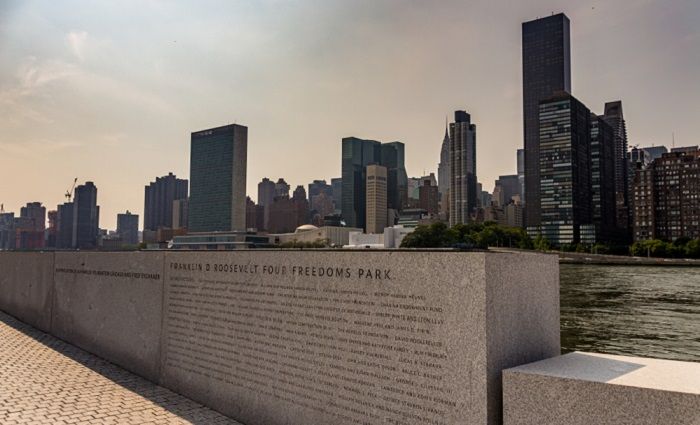
FDR | Four Freedoms | More than City Views
For years, Roosevelt Island attracted visitors because of its aerial tram with views of Manhattan. However, the island’s southern tip contains a fascinating park dedicated to Franklin Delano Roosevelt (FDR). Although completed in 2012, the FDR Four Freedoms Memorial Park dates to a 1972 plan designed by architect Louis Kahn. Specifically, the park commemorates FDR’s famous “Four Freedoms” speech.
Historian Jeffrey A. Engel explains the four freedoms that FDR addressed involved “freedom of speech, freedom from want, freedom of religion, and freedom from fear.” FDR delivered the famous speech to Congress on January 6, 1941. Scholars Stephanie Haboush Plunkett and James J. Kimble say that the famous illustrations of Norman Rockwell came to embody these four freedoms.
Scholars consider this to be one of the most influential presidential addresses ever delivered. It came as WWII raged and the US would soon be engaged in the conflict. FDR’s speech outlined critical American values and the cherished freedoms he desired for the entire world.
How to get to: Roosevelt Island
Not ready to book a tour? Plan your trip using our helpful NYC Guide.
14. Subway System
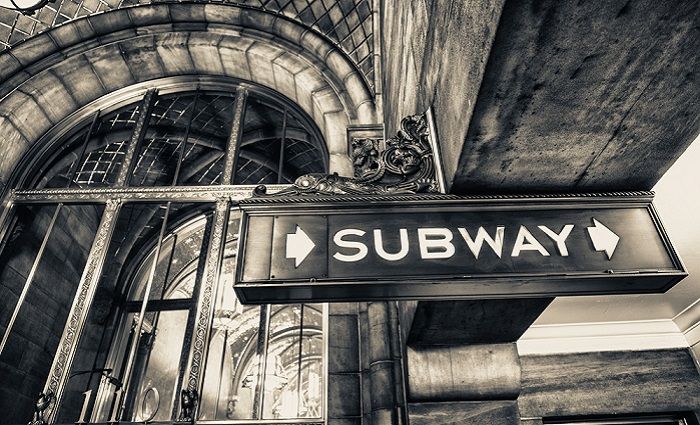
Modern Marvel | Fanfare | 700+ Miles
New York City’s subway system is an extraordinary feat of engineering, yet you could say it is the most mundane. Few of the millions of annual riders likely ponder its mechanics or history. However, we’ll reflect here on the system’s story.
The subway’s first line opened to great fanfare in October 1904. According to historian Stefan Höhne, this transformed NYC into a city of underground riders. Early on, NYC boasted barely 20 miles of underground tracks. However, historian Clifton Hood says that by the 1940s, the subway tracks stretched a whopping 722 miles. That is enough track to travel from New York to Chicago!
However, the subway’s story deserves our attention for more than its rapid expansion or the change it brought to NYC. According to historian John E. Morris, the subway is both an essential function as well as a monument equal to any of NYC’s most famous examples. For Morris, “to be a New Yorker is to take the train.” But I think you can also say that no visitor’s trip to NYC is complete without a subway experience.
13. Empire State Building
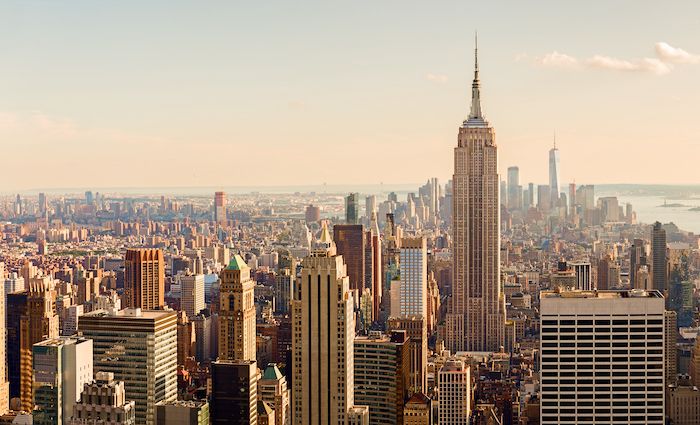
Enterprise | “Empty State Building” | Innovation
The Empire State Building is one of the world’s most famous structures. It is not only a symbol of NYC but also an embodiment of America’s rise to global financial power in the 20th century. At the same time, historian David Farber says it is one of the most famous examples of art deco architecture. However, the building’s history is not a linear story of success.
On the one hand, architectural historian and critic Vincent Scully says the Empire State Building was “built as much for glory as the Parthenon was.” While that may have been what the visionaries had in mind, the building’s early history does not align. In fact, as historian Piers Brendon notes, the Great Depression took a devastating toll on the Empire State Building’s prospects. Historian John Tauranac says the building had so few tenants in the 1930s it became known as the “Empty State Building.”
However, the second half of the Empire State Building’s story is one of recovery and innovation. By the early post-WWII years, historian Benjamin Sitton Flowers says occupancy picked up. On top of that, tourists enjoyed the views from the Empire State Building in increasing numbers.
How to get to: Empire State Building
12. Broadway/Times Square
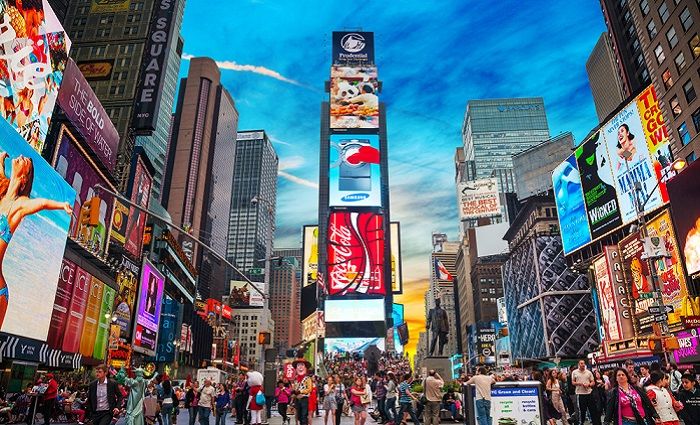
Cows? | Advertising | Neon Lights
The intersection of Broadway and 7th Avenue is the beating, neon heart of NYC. However, the neon lights were not always ingrained in the landscape of this part of the city. Before the area became the city’s central entertainment district, it had a notable history with cows. Scholar Fran Leadon explains the area featured a high-traffic cow path in the 17th century, and that the future Times Square was called Longacre Square until the turn of the 20th century.
Nevertheless, we associate Times Square with the latest of anything displayed in advertising. As historian Mike Wallace explains, advertising boasts a long history in Times Square. Few places in NYC scream “Roaring 20s” quite like Times Square. The area has been a focal point of American consumerism and entertainment since the early 20th century. Of course, that includes the ever-popular New Year’s Eve festivities too.
Moreover, historian Bruce Bliven explains that Broadway’s theater district was in full swing by the early 1900s. However, the area boasted a famous former theater as early as the 1890s. By emerging as a booming entertainment area, Broadway surpassed Union Square in importance for theatergoers, according to historian Eric Homberger.
11. Flatiron, Woolworth, and Chrysler Buildings
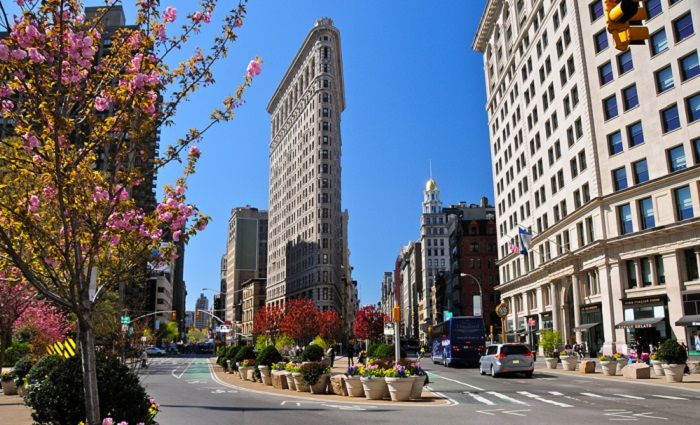
Oldest Skyscraper? | Tallest Building Competition | Cathedrals of Commerce
For starters, let’s talk about the Flatiron Building. Historian Bruce Bliven explains that Daniel Burnham designed the uniquely shaped 20-story building in 1902. The narrow triangular-shaped structure shares beaux-arts elements in the façade with many famous NYC buildings like Grand Central Terminal. And historian Mike Wallace says that the Flatiron stood as the world’s tallest building until 1909.
NYC’s skyscraper history, however, tends to begin with the 1913 Woolworth Building. Architect Frederic Schwartz explains that Cass Gilbert completed the building for business magnate F.W. Woolworth. Bruce Bliven says F.W. Woolworth embraced the building’s nickname, “Cathedral of Commerce” though it was meant to be critical of the behemoth. At 792 feet, the Woolworth stood as the world’s tallest building until 1930.
But the Woolworth was surpassed by another Manhattan building, which is why we have to discuss the Chrysler Building. Historian John Tauranac explains that the lobby contains art dedicated to American industry and the skill of Chrysler auto workers in particular. But Schwartz tells us the building’s spire (called the “vertex”) stems from the tallest building competition.
In fact, Schwartz says you can see it as a bit of revenge between two feuding architects working on different projects. Specifically, Chrysler Building architect William Van Alen fell out with former colleague H. Craig Severance. Severance thought a building he designed on Wall Street would be the tallest building until the vertex atop the Chrysler Building appeared. However, that dispute proved moot within a short time thanks to the grand opening of the Empire State Building in 1931.
How to get to: Flatiron Building
Not ready to book a tour? Plan your trip using our helpful NYC Guide.
10. Revolutionary Era New York City
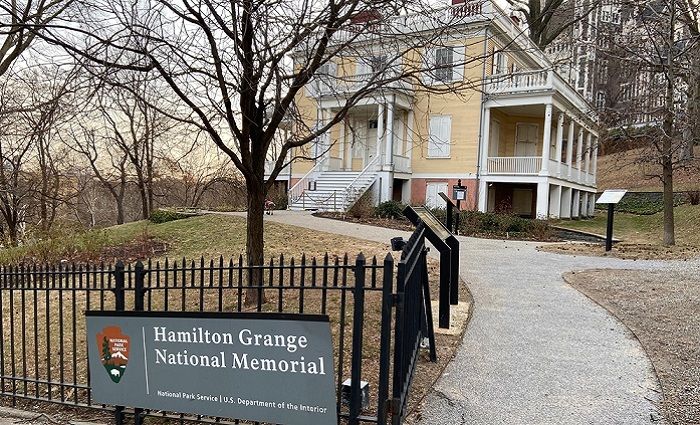
Washington Stayed Here | His Name Is | Alexander Hamilton
It’s hard to imagine today, but New York City’s skyscrapers did not always dominate the skyline. In fact, as historians Edwin G. Burrows and Mike Wallace explain, New York looked quite different before 1898. In that year, the five boroughs joined together to create New York City, the largest city in America.
Yet well before 1898, New York served as a significant urban center in North America since it was a major port in British North America prior to the American Revolution.
The oldest surviving house in Manhattan, the Morris-Jumel Mansion, dates to 1765. Moreover, the mansion is a great place to ponder the “what ifs” of history. For example, historian Rick Atkinson says British soldiers narrowly missed capturing George Washington at the mansion in November 1776.
Yes, there are several impressive buildings connected to George Washington in NYC. However, the real showstoppers relate to that Founding Father who has lately become a celeb: Alexander Hamilton. In fact, you can visit his former Manhattan home too.
Hamilton Grange, as it is known, has been moved three times since 1802. Historian Joanne Reitano says this Federal-style building initially sat on more than 30 acres of land owned by Hamilton. Sadly, Hamilton only lived briefly at this home before being killed in a duel with political rival Aaron Burr.
How to get to: Alexander Hamilton Grange National Memorial
9. United Nations Headquarters
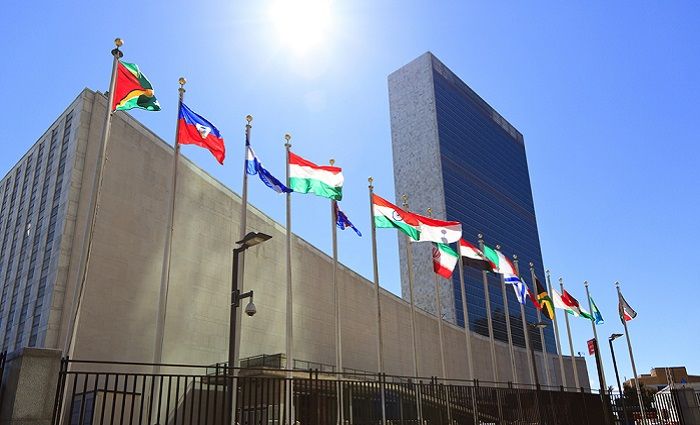
International | Neutral Ground | New Era
You’ll have to travel to Manhattan to check out the headquarters of the United Nations, which is officially international territory. Scholar Peter Reed says the UN headquarters dates to 1953 and encompasses six city blocks on land donated by John D. Rockefeller. Thus, the international organization founded in 1945 gained a permanent home in NYC.
The complex’s design stems from an international committee of architects chaired by New York architect Wallace Harrison. Reed also tells us the committee included the likes of legendary Franco-Swiss architect Le Corbusier, which means the architecture is diverse and eclectic. However, it all attests to early postwar optimism.
For instance, historian Mark Mazower points out that placing the UN Headquarters in NYC marked a turning point in international and American history. It meant that situating the world’s main international organization in the US and not in Western Europe marked the culmination of America’s rise as a global power after WWII.
How to get to: United Nations
8. Rockefeller Center
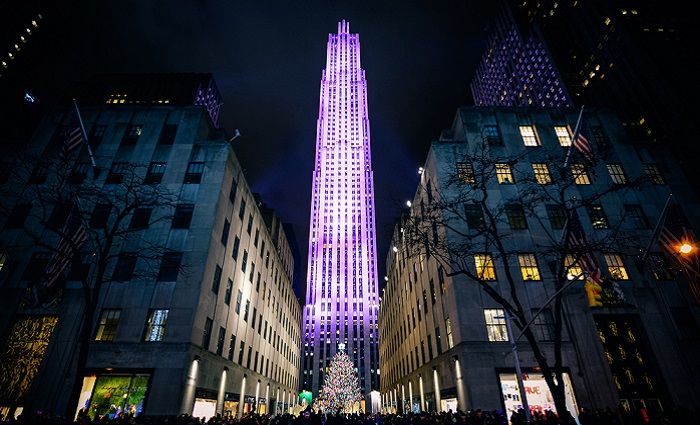
City Within a City | Top of the Rock | Holiday Season
The Rockefeller Center sits on more than 20 acres of prime Midtown Manhattan real estate. Hence, historian Eric Homberger tells us the Rockefeller Center earned the nickname “a city within a city.” As historian Bruce Bliven tells us, Rockefeller Center became America’s first multiuse retail, office, and entertainment complex.
Like many famous NYC landmarks, including the Empire State Building and the Chrysler Building, Rockefeller Center’s early history dates to the Great Depression. Architect Frederic Schwartz explains Rockefeller Center is an important example of Modernist and art deco styles.
Beyond its architectural significance, Rockefeller Center hosts impressive works of public art. For example, art historian Tamsin Pickeral reminds us of sculptor Paul Manship’s contributions, Prometheus and Atlas. Sadly, you won’t see art by legendary Mexican artist Diego Rivera though it was originally commissioned. In fact, historian Eric Homberger tells us the Rockefellers rejected Rivera’s painting on grounds that it displayed “communist imagery.” In its stead, you’ll see Jose Maria Sert’s “American Progress” in the GE Building’s lobby.
The Rockefeller Center’s highlights also include NBC Studio and the Top of the Rock. You’ll find the Top of the Rock more than 70 stories high atop the GE Building. As a result, you’ll get stunning views of NYC and especially of the Empire State Building. Finally, Rockefeller Plaza is the place to be during the holiday season in NYC. It’s the iconic area where you’ll find an ice rink as well as the city’s massive Christmas tree.
How to get to: Rockefeller Center
7. Historic Places of Worship
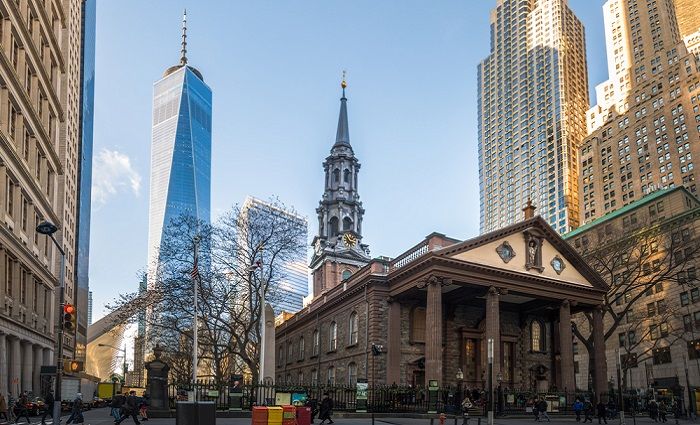
Community | Witness to History | Records
A brief description here cannot possibly cover the architectural treasures that are NYC’s many historic houses of worship. However, we’ll highlight a few from different architectural traditions. The first brings us to historic St. Paul’s Chapel in Lower Manhattan. As historian Thomas Dyja notes, it is now called “the little chapel that stood” due to its miraculous survival during the 9/11 attacks. This chapel even made our list of cool things to see around the 9/11 Memorial.
Just one piece of stained glass marks the only damage St. Paul’s sustained on that tragic day. Originally opened in 1766, St. Paul’s is a chapel belonging to the parish of Trinity Church. Historian Rick Atkinson tells us St. Paul’s is the burial place of several prominent Revolutionary War figures, including General Richard Montgomery.
Temple Emanu-El is the host of the first Reform Jewish congregation in NYC. Historian Deborah Dash Moore explains the synagogue dates to 1845 and is one of the largest in the world. It is also famous for its stunning Romanesque Revival architecture. Massive structures became the trend for the city’s houses of worship in the mid-19th century. For example, art historian Tamsin Pickeral tells us St. Patrick’s Cathedral (built 1858-1879) took over an entire city block!
Finally, we’ll mention the unfinished Cathedral Church of St. John the Divine. Historian Thorin Tritter explains the church is often referred to as “St. John’s the Unfinished.” In fact, its undergone massive changes since its initial construction began in 1892. For example, architectural firms and even styles changed over several decades. Furthermore, if completed, St. John’s would be the third largest church in the world and the largest in the US.
How to get to: St Paul’s Chapel, Temple Emanu-El, and Cathedral Church of St. John the Divine
Not ready to book a tour? Plan your trip using our helpful NYC Guide.
6. Grand Central Terminal
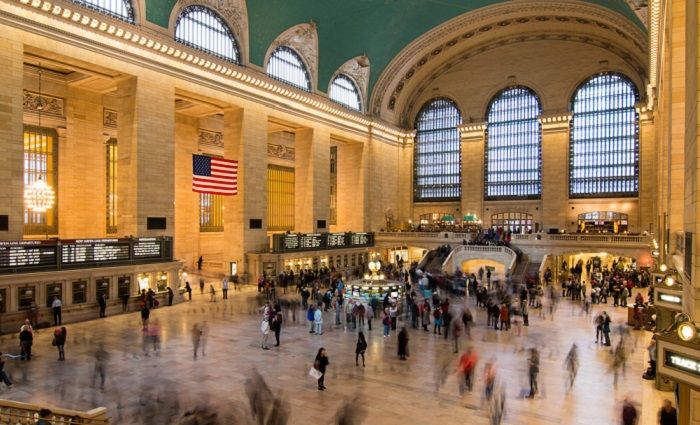
Vanderbilt | More Than a Station | Famous Façade
Grand Central is a great place to transport yourself back to the age of financial and industrial magnates like Cornelius Vanderbilt. According to scholar Justin Davidson, Vanderbilt didn’t appreciate the original Penn Station’s opening. As a result, he wanted a more impressive transportation hub than Penn Station and its current Grand Central Depot.
Thus Grand Central Terminal was born. From an architectural standpoint, Schwartz says Grand Central is as fine an example of beaux-arts as you’ll find in NYC. The station’s 42nd Street façade is crowned by the monumental sculpture The Glory of Commerce that Homberger says French sculptor Jules-Felix Coutan created in 1914.
Grand Central is clearly more than a transportation center. For example, its interior is richly adorned with Italian marble, vaulted ceilings, and impressive art. One such example is the ceiling fresco originally designed by French painter Paul Cesar Helleu. However, scholar Justin Davidson says deterioration prompted repainting in mural form in the 1940s and later.
How to get to: Grand Central Terminal
5. Central Park
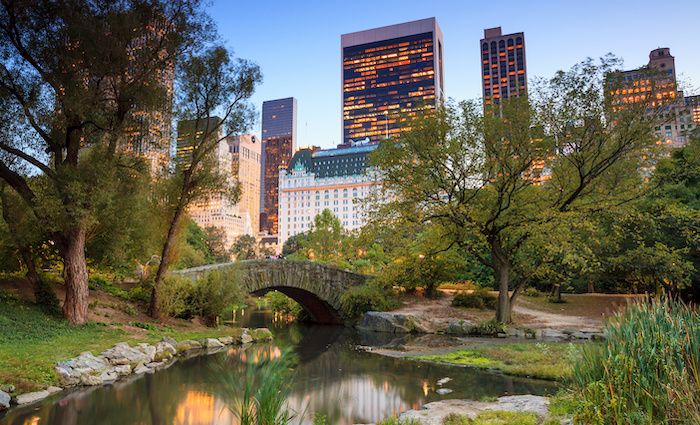
Engineering Feat | Expansive | “City’s Lungs”
Today’s Central Park is over 800 acres of pleasant greenspace, woods, and ponds. Despite this natural appearance, historians Roy Rosenzweig and Elizabeth Blackmar argue that Central Park is also a massive engineering accomplishment.
To appreciate this, we need to consider Central Park’s history before Frederick Law Olmsted and Calvert Vaux got to work on the project in the 1850s. For example, Burrows and Wallace tell us the future Central Park formerly contained pig farms and even a garbage dump! Now the park boasts no less than seven bodies of water, thousands of trees, playgrounds, gardens, and even a zoo, among other features.
Since emerging as a massive rectangular patch of greenspace in the 1870s, Central Park has played the role of the “city’s lungs.” Moreover, Central Park is a recurring protagonist in NYC’s history. For example, historians Rosenzweig and Blackmar highlight the park’s role in various social movements, including the “be-ins” staged by anti-Vietnam War activists in the 1960s. And though Olmsted and Vaux designed several NYC parks, none match Central Park’s scale.
How to get to: Central Park
Not ready to book a tour? Check out our helpful guide to NYC.
4. Brooklyn Bridge
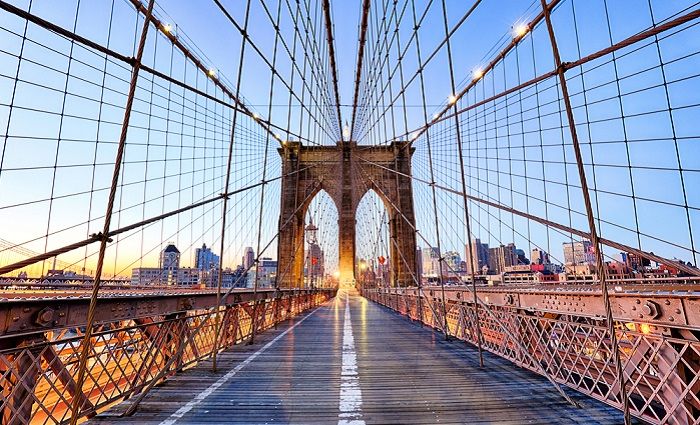
Firsts | Inspiration | Penny Crossing
Historian David McCullough’s classic history of our next entry is titled The Great Bridge. So where to begin when discussing the Brooklyn Bridge? Well, according to McCullough, the Brooklyn Bridge is the epitome of American feelings during the Age of Optimism in the late 19th century.
Despite the can-do spirit of that age, the Brooklyn Bridge’s story is one of both triumph and tragedy. For example, historian Jeffrey I. Richman tells us over 20 workers lost their lives during construction. And historian Erica Wagner explains Washington Roebling served as the bridge’s chief engineer whose father conceived the project as far back as the 1850s.
Completed in 1883, the Brooklyn Bridge is unquestionably one of NYC’s most impressive engineering and architectural marvels. Homberger says its fame comes in part from being not only the first land connection between Manhattan and Brooklyn, but also the world’s first steel suspension bridge.
Moreover, the bridge generated massive fanfare upon opening. Wallace notes that a whopping 150,000 people paid a penny to cross on that day. (The Golden Gate Bridge had 200,000 visitors a few decades later.) Then in 1884, PT Barnum marched elephants across the bridge to prove its durability to remaining naysayers, according to Wagner. The magnificence of the Brooklyn Bridge continues to inspire generations of artists, photographers, poets, and musicians.
How to get to: Brooklyn Bridge
3. One World Trade Center
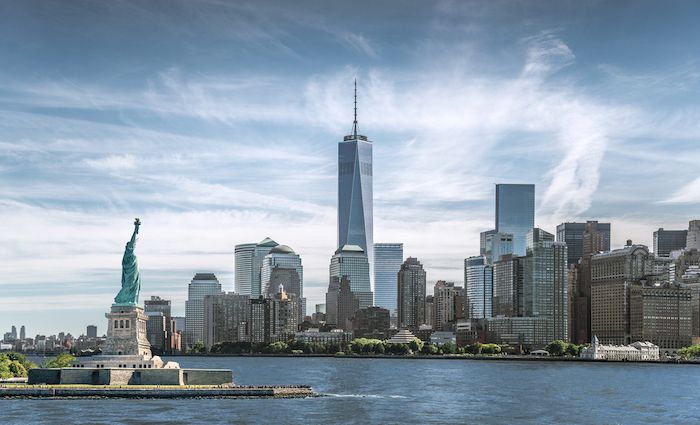
Renewal | Observatory | Famous Tenants
One World Trade Center stands among the crowning achievements of Lower Manhattan’s renewal following the tragic events of September 11, 2001. As historian Thomas Dyja explains, the building tops the chart as NYC’s tallest building at 1,776 feet. Speaking of more records, One WTC is the tallest building in the western hemisphere and the 4th largest in the world.
Historian Eric Homberger tells us architect David M. Childs’ building is in the northwest corner of the original World Trade Center site. One World Trade Center is home to the One World Observatory. A trip to the observatory will whisk you to a prime perch to view the city’s many monuments. Plus you’ll get an overview of NYC’s history and evolution in the process. From this observation point on a clear day, you’ll easily see not just NYC’s five boroughs, but three adjoining states!
Fittingly for such a grand building, there is no shortage of VIP tenants. For instance, several major publishers have their headquarters in One WTC.
How to get to: One World Trade Center
2. Statue of Liberty
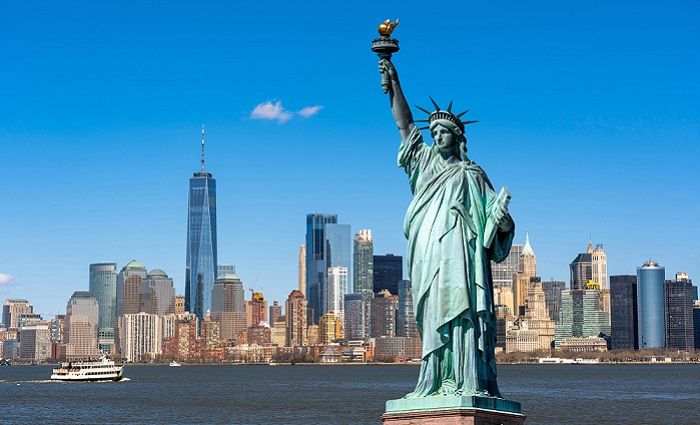
Civic Symbol | French Roots | Lady Liberty
The Statue of Liberty seems as all-American as apple pie and the 4th of July, but not so. In fact, as historian Yasmina Sabina Khan explains, the monument originated in France. Khan states that French legal scholar Édouard-René Lefebvre de Laboulaye came up with the idea for the monument. Saddened by Abraham Lincoln’s assassination in April 1865, and eager to promote close ties between the US and France, he set out to raise funds for the monument.
Laboulaye and the French referred to Lady Liberty as La Liberté Éclairant le Monde, which means Liberty Enlightening the World. The Statue of Liberty’s journey from abstract conception to colossal monument involved highs and lows for its major organizers. Khan mentions that prominent organizers included sculptor Frédéric Auguste Bartholdi and Gustave Eiffel (of Eiffel Tower fame).
Despite its lengthy production time, the Statue of Liberty rapidly emerged as a powerful symbol of American democratic ideals and aspirations. It has often been a rallying symbol for many decades, but particularly in the aftermath of 9/11.
How to get to: Statue of Liberty
1. 9/11 Memorials
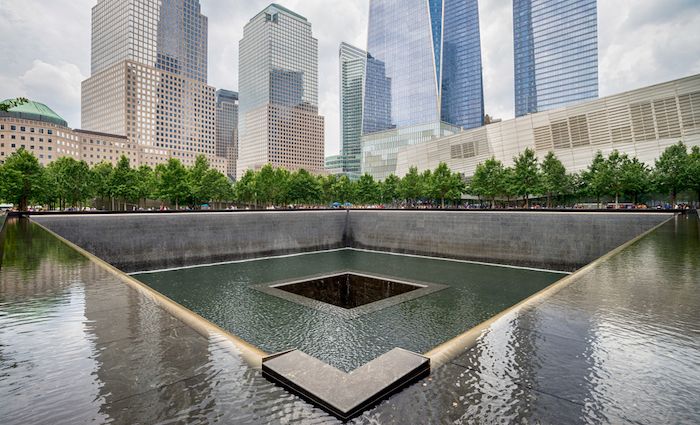
Remembrance | Reflecting Absence | Never Forget
We know the 9/11 attacks transformed far more than NYC’s landscape. The events mark a watershed moment in American and global history, and the National September 11 Memorial enables visitors to reflect on the scale of the tragedy of that day. The contest-winning memorial design by Michael Arad and Peter Walker is titled “Reflecting Absence” and includes two massive pools with the largest man-made waterfalls in America.
Furthermore, bronze panels inscribed with the names of victims lost in the 2001 and 1993 terrorist attacks on the World Trade Center line the pools. Scholar Justin Davidson explains that the flow of water is rich in symbolism. What begins as thousands of smaller streams merges into a collective torrent before drifting into the dark abyss. The site also features the Memorial Glade, the Survivor’s Tree, and the National September 11th Museum.
How to get to: Ground Zero and 9/11 Museum
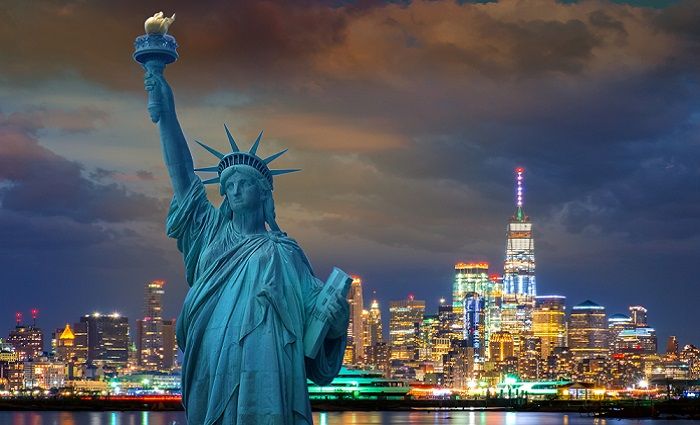
Where to Stay in NYC
New York City is the center of the universe to those who adore this iconic city. Choose the best neighborhood to stay in as you plan your upcoming trip to the Big Apple.
